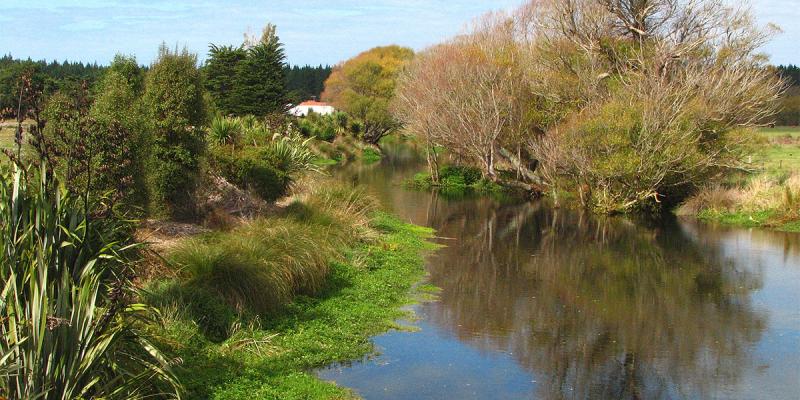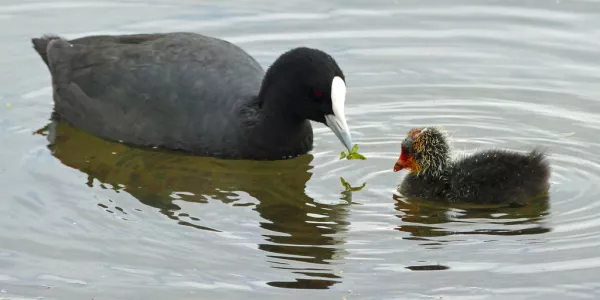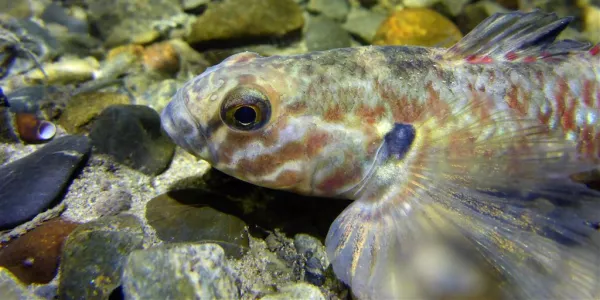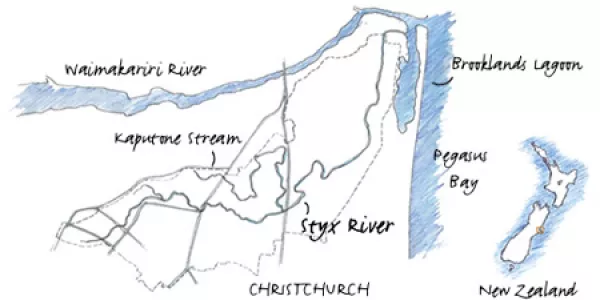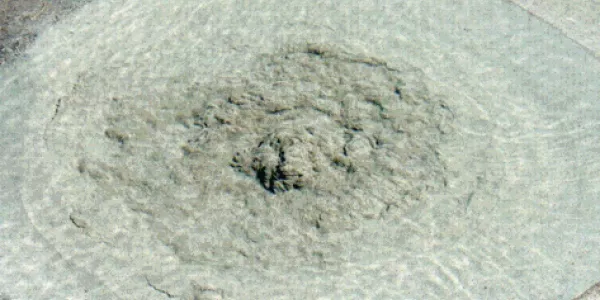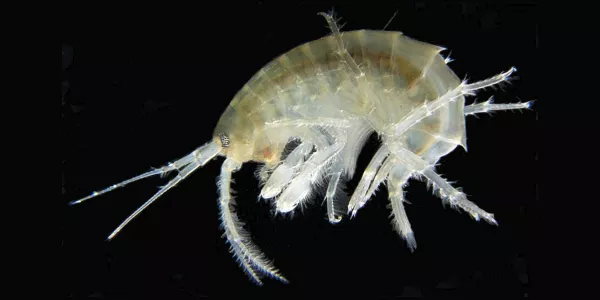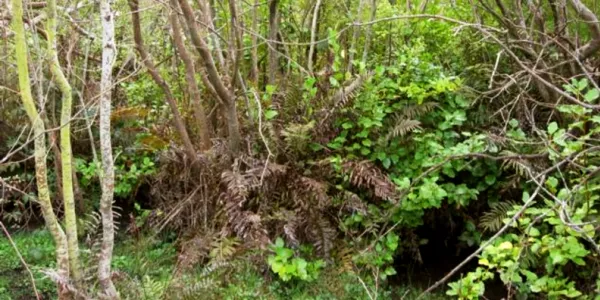The Styx Environment
As indicated by the Black Map drawn in 1856, when early Europeans settled in the area, the Styx River and its tributaries were surrounded by extensive wetlands. There was also a possible tributary link to the much larger Waimakariri River.
Since then the area has been extensively modified through farming and drainage practices, and in some cases, by residential development. Nevertheless earlier natural values are still apparent. Native sedges and ferns are regenerating under the tall willow canopy along the river margins. Sand dunes and river terraces indicate the natural processes associated with earlier northward movement of the Waimakariri River and the changing coastline. The salt marsh at the mouth of the Styx River provides an excellent example of what was once present along much of the Canterbury coastline.
The Styx River is one of several spring fed river systems that originate and flow through the city of Christchurch, New Zealand. This catchment, located on the northern urban edge, is approximately 50 square kilometres.
The river originates in the suburb of Harewood as a dry swale intermittently filled with storm water. Springs feed the river as it meanders north-eastwards through residential, horticultural, agricultural, and lifestyle developments as well as conservation reserves. The Styx River, 24.8 kilometres long, has two main tributaries, Smacks Creek and Kaputone Stream. Several other smaller waterways, both natural and constructed, drain into the Styx River before it enters the sea north of the city of Christchurch via Brooklands Lagoon and the Waimakariri River.


